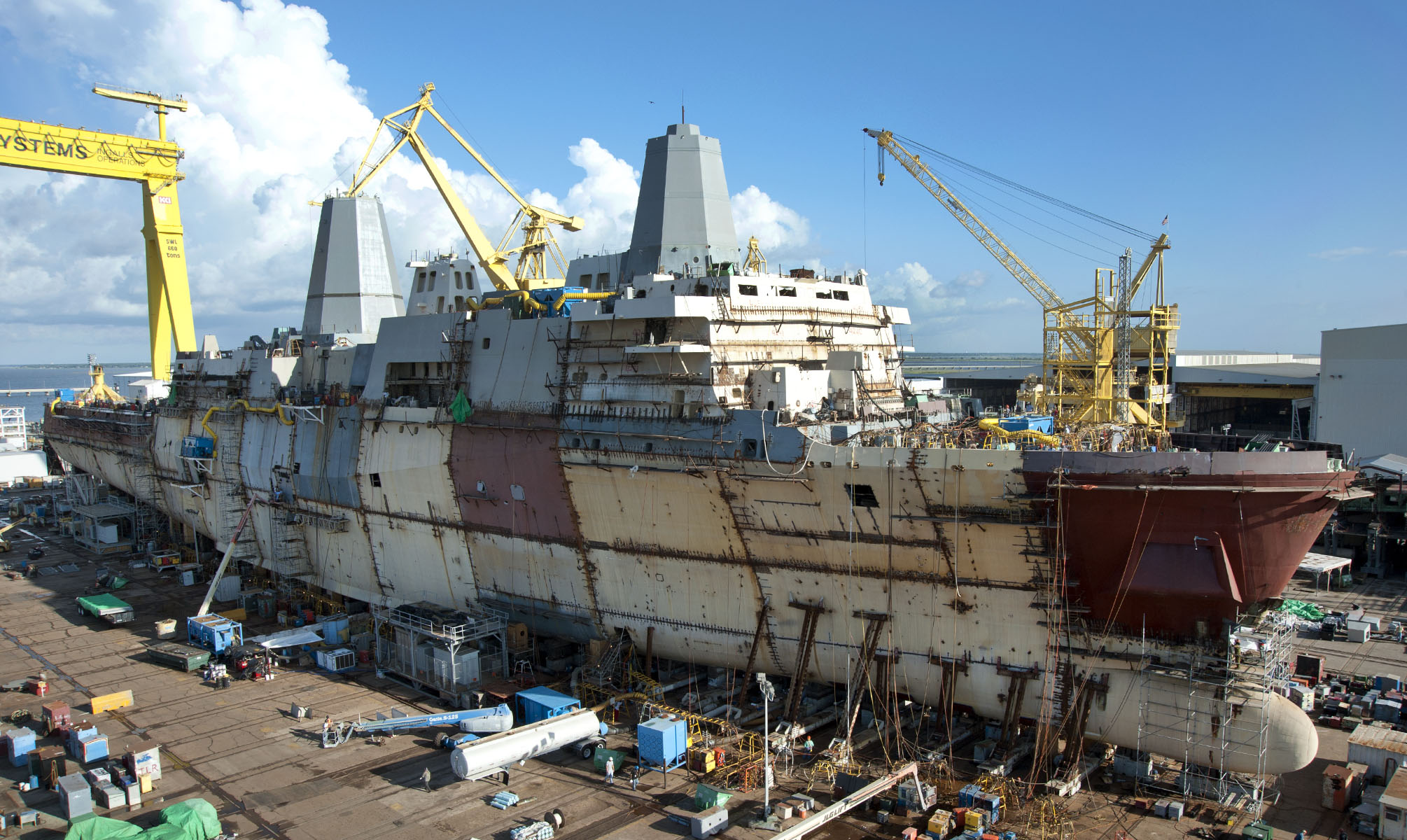
Secretary of the Navy Ray Mabus has signed an internal memo recommending the service base its next generation amphibious warship (LX(R)) on the existing San Antonio-class (LPD-17) warship design, first reported by the Inside the Navy newsletter on Monday.
Mabus’ approval of the memo, which he signed last week, validates more than a year of Marine Corps lobbying for a new amphibious ship based on the existing 25,000-ton San Antonio design.
“Through a focused and disciplined process that analyzed required capabilities and capacities, as well as cost parameters, it has been determined that a derivative of the Amphibious Transport Dock (LPD-17) hull form is the preferred alternative to meet LX(R) operational requirements,” read the document.
The lead ship of a San Antonio derived LX(R) would cost about $1.64 billion with follow-ons costing about $1.4 billion for a total of 11 ships, according to information from the service.
Navy officials would not comment to USNI News on the memo saying the service typically doesn’t comment or confirm details on internal memoranda.
San Antonio builder Huntington Ingalls Industries (HII) told USNI News the shipbuilder was, “encouraged that the Navy has selected a variant of the LPD amphibious warship to satisfy the requirements for LX(R), recognizing the LPD’s proven capability, flexibility and affordability,” in a Monday afternoon statement.
Affordability has been the primary driver of the Navy’s quest for the replacement to the service’s aging Whidbey Island and Harpers Ferry 16,000-ton landing ship docks (LSD-41/49).
The service has taken at least three separate tries at the analysis of alternatives for the ship examining a LX(R) build on a San Antonio hull, a foreign variant or an entirely new ship design, Sean Stackley, Assistant Secretary of the Navy for Research, Development & Acquisition (RDA), told the House Armed Services Subcommittee on Seapower and Projection Forces in July.
The head of Naval Sea Systems Command (NAVSEA) — Vice Adm. William Hilarides — told reporters in May the internal conversation around LX(R), “the best ship design conversation we’ve had in a long time inside the government.”
The memo from Mabus comes as little surprise to industry watchers. Marines from recently retired commandant Gen. James Amos to a group of retired generals have long stumped for the LPD-17 as the basis for LX(R).
“The opportunity to continue that hull form or something similar to it has great operational advantage to us. It gives us the ship-to-shore, sovereign launch and recovery capability that we need,” assistant commandant Gen. John M. Paxton told the July congressional panel.
“It gives us maintenance capability that we need. It gives us command and control capability for disaggregated operations in case we have to split up that Marine Expeditionary Unit (MEU) in two or three different locations.”
Despite the internal memo recommending the LPD-17 hull form, the final answer of the LX(R) question is far from certain. The next major step for the program is the so-called Milestone A review in which the final outline for a major defense acquisition program is settled.
Also, just because the LPD-17 hull form is the preferred option for the Navy, it doesn’t mean that HII will be the prime contractor for the LX(R). Though HII’s Ingalls Shipbuilding in Pascagoula, Miss. is the only hot production line for San Antonio hulls, the Navy will likely introduce some element of competition with other U.S. naval shipbuilders for LX(R).





